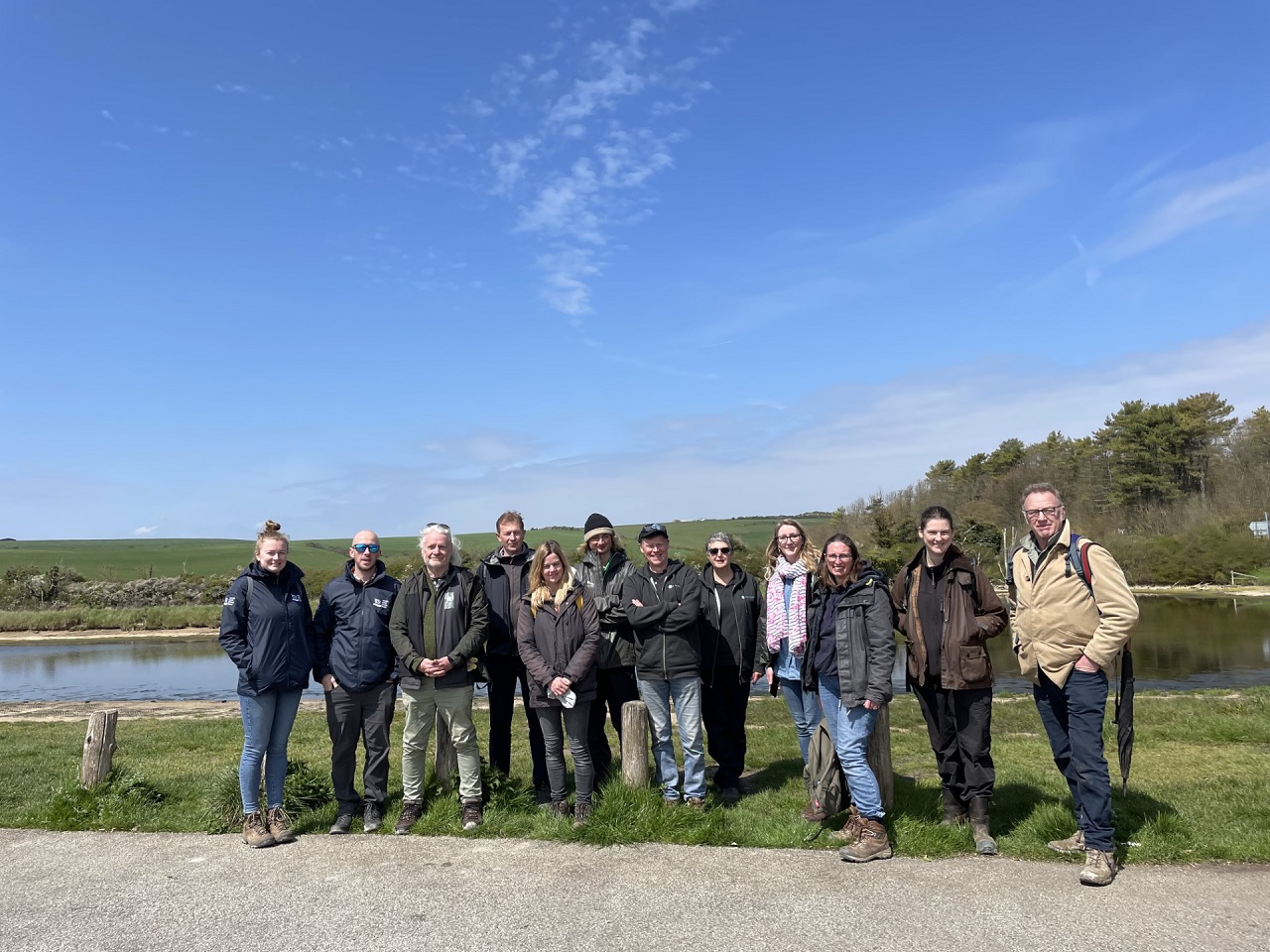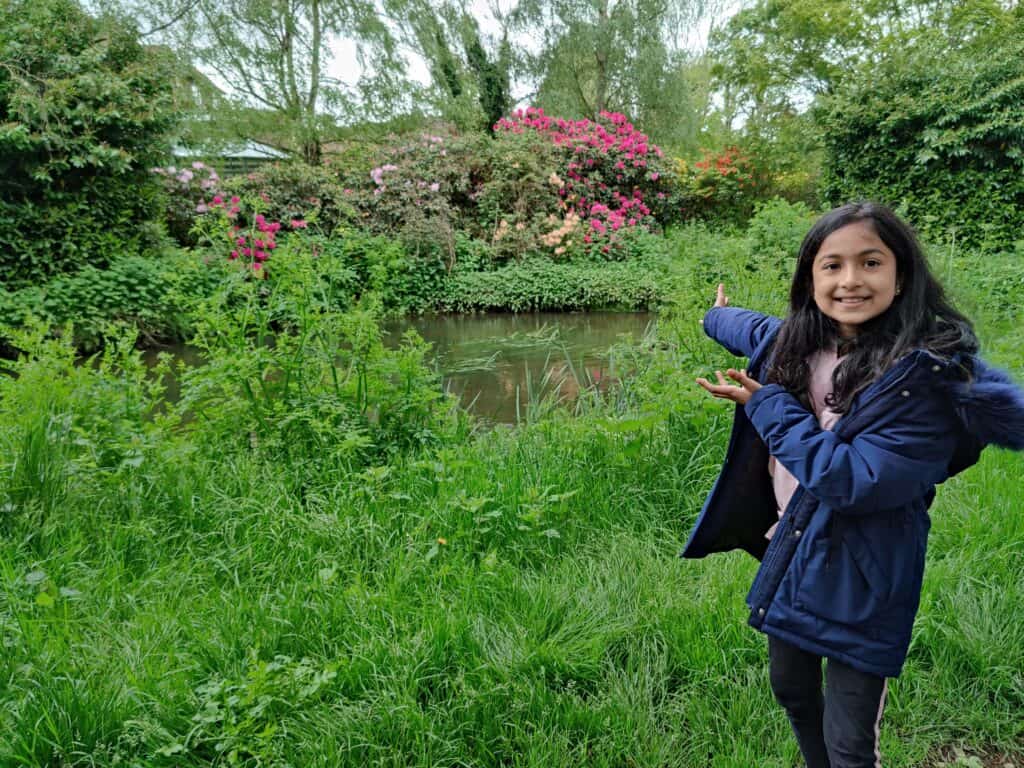Have you ever wondered what it’s like to be a Catchment Officer? What is it exactly they do? The South East Rivers Trust’s catchment officer for the Loddon River catchment, Lou Sykes, takes us through a typical week; from admin tasks to going out and assessing the state of sections of rivers with partners, to plan improvements.
Lou says: “My job in its simplest form? I host Catchment Partnerships, meaning I chair meetings of different stakeholders with a geographical common interest in a particular collection of rivers which make up one named network. In my case, one of these is the River Loddon and another the Cuckmere & Pevensey Levels.
“The external partners in a partnership could be water companies, the Environment Agency and Natural England, environmental NGOs, community flood groups, local councils, fishing groups. All of them have an interest in improving the health of the river. Collectively, we want to improve and maintain the health of the river network as a whole, not just treat sections in isolation.
“As detailed on our Catchment Partnerships page, this method is guided by the national Catchment Based Approach (CaBA). Every catchment partnership is different, and this is why they work so well: you can tailor them to your patch and work on the specific needs of that river system.”
Monday
Typically, this is a working from home day. I start with a morning catch up with the Science and Partnerships team before going through my emails. I complete admin tasks such as writing minutes from a Catchment Partnership meeting I hosted recently, then send off a few emails for events and activities planned for later in the week.
Tuesday
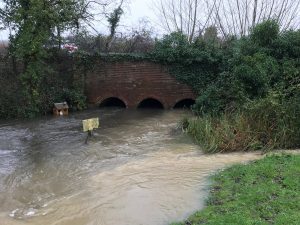
Today I was involved producing a statement piece that provides a holistic view on the water quality of the river.
This included information gathering on legal and illegal discharges into rivers, drinking water standard breaches and citizen scientist data collection.
We have been working with local MPs who have a keen interest in their local river and want to work with citizen scientists – members of the public who volunteer for tasks in their spare time.
Through them we want to understand the current state of the water quality and investigate ways that we can monitor and make improvements.
Wednesday
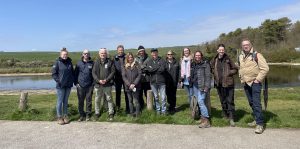
Catchment Partnership meeting day! These happen quarterly and it was exciting to have our first one in-person, post-COVID. Typically, our meetings have themes – this one focused on looking at emerging water company plans as they go through their next phase of business planning for both their Water Industry National Environment Programme (known as WINEPs) and their Water Resources Management Plans (WRMPs).
Other topics at meetings can vary from looking at biodiversity and wildlife (both native and invasive species) to investigating ideas for tearing up a weir that is acting as a barrier to fish who need to move between different sections of river to find the best feeding and breeding grounds.
By engaging many different parties in this collaborative format, we are providing the opportunity for community groups, government bodies and water companies to come together and form common goals to help rivers thrive. This is particularly important as it allows us to look at the area in a ‘big picture’ format because in every river system, what happens upstream impacts the downstream area.
Thursday
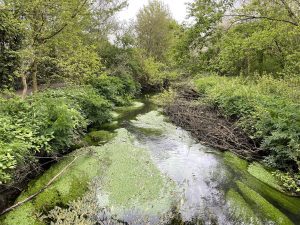
This was a strategic day of investigating new funding opportunities that could be available for research, project development and delivery – the on-the-ground restoration work that will improve rivers for wildlife and as places people can enjoy. Being a project-funded organisation means we are constantly looking for funding opportunities. We might be looking to “rewiggle” – or remeander – a straightened river. We might want to help fish connect to different parts of a river network by removing man-made, historical objects such as weirs, as we have done at Acacia Hall, Dartford, or by installing eel or fish passes, like we have done further along the Darent. We might be wanting to look to create backwaters to increase biodiversity and mitigate against potential flooding. For one such example, read about Charvil Meadows, on our Loddon Storymap (in the “Action plan” section under “case studies”).
All this work requires funding, and the co-operation of landowners and other interested groups to make it happen, so the over-riding strategy has to look at prioritisation to improve the whole catchment. On this particular week, I also got out to meet and continue to develop a relationship with one of the key stakeholders on my patch. These meetings are some of the most vital parts of my job. Time and resource in every environmental job is a stretch and collaborative working is the key to keeping everything on track.
I finished off the day with a catch up of our Catchment Officers team at SERT. We are constantly evolving and working out ways that we can work more efficiently, working together so that we are not reinventing the wheel every time something new crops up.
Friday
A large part of my job also involves putting on a pair of wellies, getting out on site and identifying opportunities in the catchment for improving stretches of river or their surrounding land.
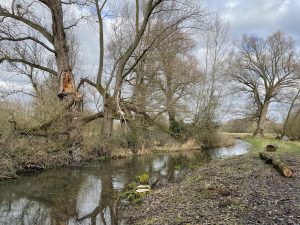
On this particular Friday, I walked three miles up the River Lyde – one of the tributaries of the River Loddon – with members of a local fishing club. They were looking at how they could possibly manage the river for both their fishing club members and to keep the waterway as healthy as possible. This stretch of river is a chalk stream, so we would like the water to be clear, with clean gravel, plenty of underwater plants and a decent buffer of green on the banks. Chalk streams are globally rare habitat with only about 200 of them left in the world, 160 of which are in the UK.
Pleasingly on this day, on this river, a healthy amount of aquatic plant growth was evident and there was a good amount of shade and light getting to the channel. However, it could do with some habitat or restoration work to help mitigate erosions on some stretches.
Not every week looks exactly like this, but this is an average one. There will be weeks where there is more home working, the odd day in our HQ office in Leatherhead in Surrey, or you could end up hosting a week of volunteer events that put you in a pair of waders all week, such as during Loddon Rivers Week held annually in September.
This is the beauty of being a catchment officer or manager – it’s varied nature keeps you on your toes and gives very little opportunity for burn out from doing the same thing over and over again.

